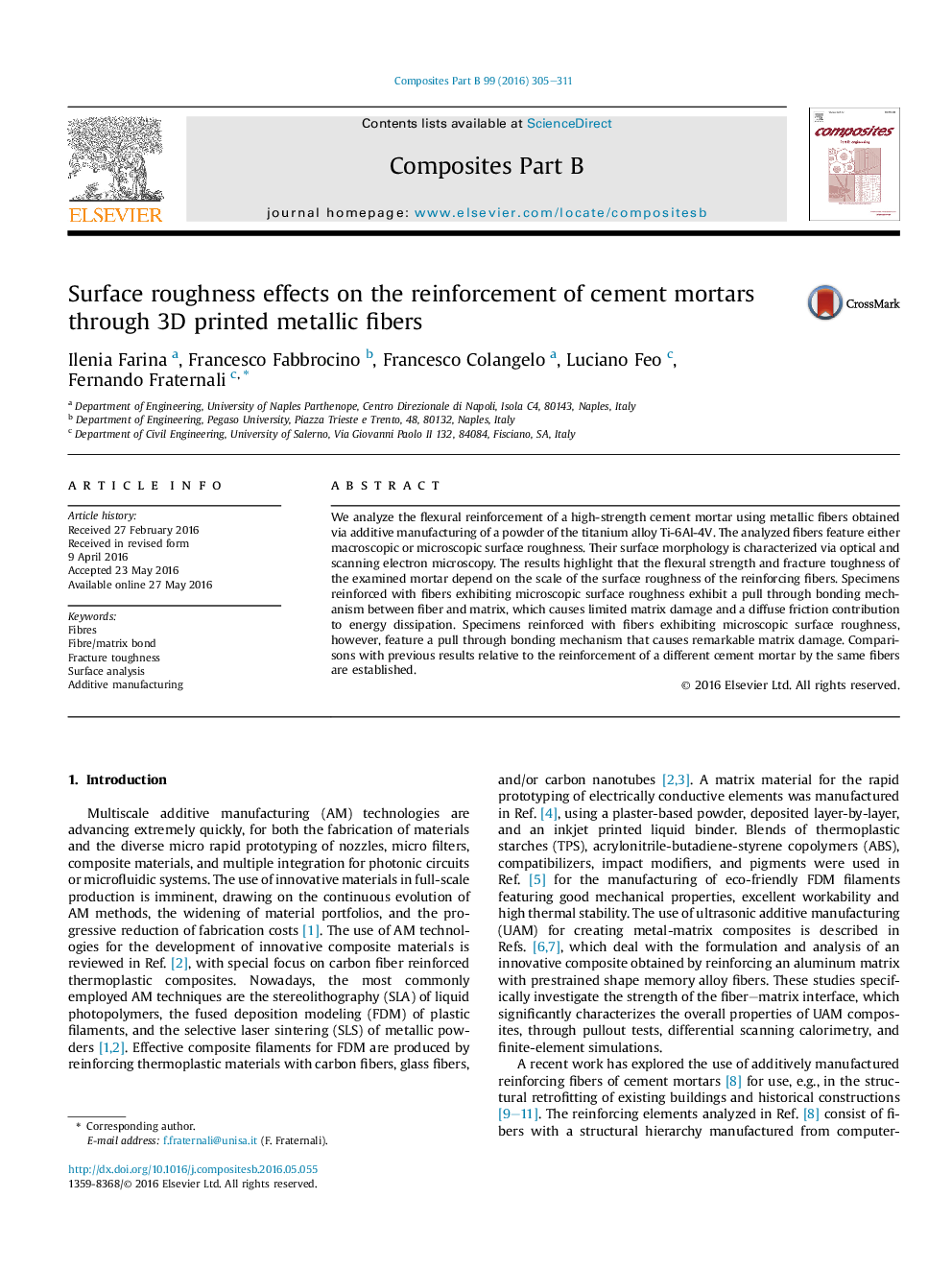| Article ID | Journal | Published Year | Pages | File Type |
|---|---|---|---|---|
| 7212481 | Composites Part B: Engineering | 2016 | 7 Pages |
Abstract
We analyze the flexural reinforcement of a high-strength cement mortar using metallic fibers obtained via additive manufacturing of a powder of the titanium alloy Tiâ6Alâ4V. The analyzed fibers feature either macroscopic or microscopic surface roughness. Their surface morphology is characterized via optical and scanning electron microscopy. The results highlight that the flexural strength and fracture toughness of the examined mortar depend on the scale of the surface roughness of the reinforcing fibers. Specimens reinforced with fibers exhibiting microscopic surface roughness exhibit a pull through bonding mechanism between fiber and matrix, which causes limited matrix damage and a diffuse friction contribution to energy dissipation. Specimens reinforced with fibers exhibiting microscopic surface roughness, however, feature a pull through bonding mechanism that causes remarkable matrix damage. Comparisons with previous results relative to the reinforcement of a different cement mortar by the same fibers are established.
Related Topics
Physical Sciences and Engineering
Engineering
Engineering (General)
Authors
Ilenia Farina, Francesco Fabbrocino, Francesco Colangelo, Luciano Feo, Fernando Fraternali,
